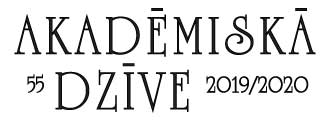Sociālekoloģiskā modeļa lietojums uzvedības maiņas komunikācijā
DOI:
https://doi.org/10.22364/adz.55.13Atslēgvārdi:
stratēģiskā komunikācija, sociālais mārketings, uzvedības maiņas komunikācija, sociālekoloģiskais modelisKopsavilkums
Modelis indivīda, starppersonu, kopienu, organizāciju, politikas mijiedarbības analīzei un vēlamām komunikācijas intervencēm katrā no šiem līmeņiem, lai iniciētu uzvedības maiņu
Atsauces
Andreasen, A. R. (1994) Social Marketing: Its Definition and Domain. Journal of Public Policy & Marketing, 13, 1, 108–114.
Barry, D. (2007) Communication Theory and Practice. McGraw-Hill Education.
Bronfenbrenner, U. (1977) Toward an Experimental Ecology of Human-Development. American Psychologist, 32, 7, 513–531, https://doi.org/10.1037/0003-066X.32.7.513.
Donovan, R. (2011) Social marketing’s myth understandings. Journal of Social Marketing, 1, 1, 8–16, https://doi.org/10.1108/20426761111104392.
Grunig, J. E. (2009) Paradigms of global public relations in an age of digitalization. PRismOnline PR Journal 6, 2, 119. Pieejams: http://www.prismjournal.org/fileadmin/Praxis/Files/globalPR/GRUNIG.pdf (28.04.2019.).
Holling, C. S.; Gunderson, L. H. (2002) Resilience and adaptive cycles. Panarchy: understanding transformations in human and natural systems. Washington : Island Press.
Kennedy, A.-M. (2015) Macro-social Marketing. Journal of Macromarketing, 36, 3, 354–365, https://doi.org/10.1177/0276146715617509.
Konkurences padome (2018) Sabiedriskās domas pētījums Par konkurences politikas un tās īstenošanas jautājumiem. [b.v.] : Konkurences padome.
Kotler, P.; Armstrong, G.; Wong, V.; Saunders, J. (2005) Principles of Marketing. 4th European ed. Harlow : Pearson Education Limited.
Mārtinsone, K.; Sudraba, V. (2016) Veselības psiholoģija. RSU.
Oishi, S.; Graham, J. (2010) Social Ecology: Lost and Found in Psychological Science. Perspective on Psychological Science, 5, 4, 356–377, https://doi.org/10.1177/1745691610374588.
PwC Legal Latvia (2019) PwC Competition watch 2019: Latvija. Rīga : PwC Legal Latvia.
Schiavo, R. (2008) Health Communication: From Theory to Practice. Journal of the Medical Library Association, 96, https://doi.org/10.3163/1536-5050.96.1.72.
Schlüter, M.; Hinkel, J.; Bots, P. W. G.; Arlinghaus, R. (2014) Application of the SES framework for model-based analysis of the Dynamics of social-ecological systems. Ecology and Society, 19, 1, 36, doi: 10.5751/ES-05782-190136.
SKDS (2019) Latvijas iedzīvotāju aptauja: attieksme pret negodīgu rīcību. Rīga : SKDS.
Solis, B.; Breakenridge, D. (2009) Putting the public back in public relations: How social media is reinventing the aging business of PR. New Jersey : Pearson Education.
Triandis, H. C.; Jain, R.; Weick, C. W. (2010) Managing Research, Development and Innovation: Managing the Unmanageable. 3rd ed. New Jersey : John Wiley & Sons.
Truong, D. V. (2017) Government-led Macro-social Marketing Programs in Vietnam: Outcomes, Challenges, and Implications. Journal of Macromarketing, 37, 4, 409–425, https://doi.org/10.1177/0276146716660833.
UNICEF (2015) Communication for Development (C4D): MNCHN C4D Guide: Communication Strategy Guide for Maternal, Newborn, Child Health and Nutrition. Pieejams: https://www.unicef.org/cbsc/index_65738.html (15.04.2019.).
Witte, K. (1994) Fear control and danger control: A test of the extended parallel process model (EPPM). Communication Monographs, 61, 2, 113–134, https://doi.org/10.1080/03637759409376328.
Wood, M. (2016) Social Marketing for Social Change. Social Marketing Quarterly, 22, 2, 107–118, https://doi.org/10.1177/1524500416633429.


